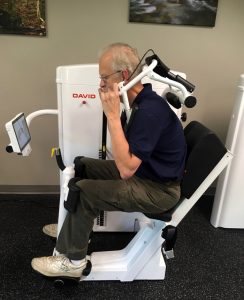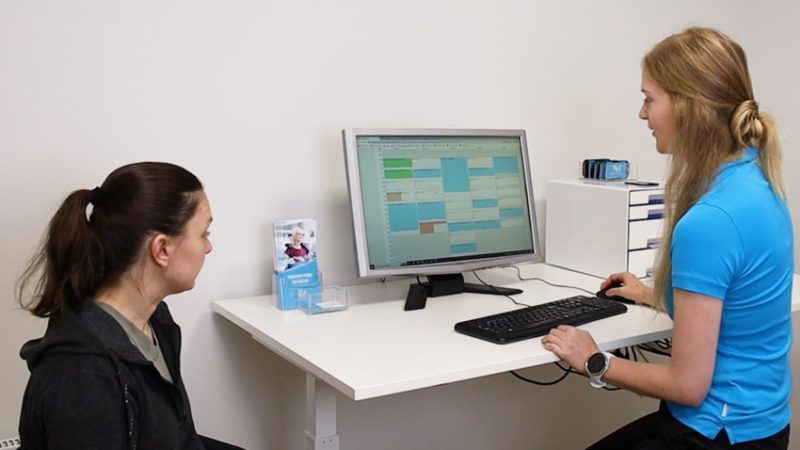In July 2010, David Hogberg was injured in a mountain biking accident. He had a fractured shoulder and ribs as well as compression fracture of L1, T11 and Transverse Process. As a result, he underwent two shoulder surgeries and rehabilitation to repair the shoulder injury. He met Dr. Knox at the Total Spine clinic in Fayetteville, Arkansas and was recommended device-based physical therapy on the MedX equipment they had then. “It was very limited in terms of ability to target specific muscle groups and provided minimal feedback on progress, but the program helped make a me a believer in device-based rehabilitation”.
David was able to be active after therapy but needed to take prescription pain medication. However, in 2018 David’s back became progressively worse. His family doctor had recommended the use of oxycodone, a stronger opioid medication for pain. But David decided to explore other options and met with Dr. Knox.
Even with such a dreadful diagnosis, Dr. Knox recommended device-based active physical therapy.
David Hogberg returned to Dr. Knox for evaluation. David was sure he needed surgery, “I was pretty dismayed”. The MRI review at Total Spine revealed disk bulges between L1-2, L2-3, L3-4 with bulge and tear at L4-5 and diffuse disk bulge with joint degeneration L5-S1. Even with such a dreadful diagnosis, Dr. Knox recommended device-based therapy with the clinic’s DAVID program.
 David Hogberg exercising on the G130 Lumbar/Thoracic Flexion device.
David Hogberg exercising on the G130 Lumbar/Thoracic Flexion device.
What does David think of the active approach?
In November 2018, David began the 16-week treatment program which includes 2 sessions a week. David was impressed with the devices, and not only because each one had his name on it. “I was immediately impressed by the scientific approach. In the diagnostic evaluation, the physical therapist creates a plan to address flexibility and strength of specific muscle groups”. He was also impressed by the feedback he received, not only on the device monitor, but also in the evaluation reports. “The EVE reports with the graphs are very helpful. It gives a common language between me and the physical therapist”.
I was happy to see my treatment progress charted in an understandable way.
The reports show where there is weakening or inflexibility in David’s back. Furthermore, these initial evaluation scores can be compared to other evaluations, showing progress and areas that still need improvement. After 8 sessions, David Hogberg and the physical therapist did a second evaluation which showed what had improved well and what needed more attention. “I was happy to see my progress charted in an understandable way”. The second evaluation also allows for changes to be made to David’s personalized treatment program in order to focus on the problem areas.
 David Hogberg with his catch of the day.
David Hogberg with his catch of the day.
Does active therapy beat opioid use in reducing back pain?
After finishing the treatment program, David saw further progress in the evaluation reports. And luckily, his pain had dramatically decreased. After the DAVID program at Total Spine, “I rarely need to take Tramadol any longer, let alone move to stronger drugs”. In fact, David is so impressed with the results he’s achieved, that he continues to visit Total Spine even after Medicare no longer covers the expenses.
David saw further progress in the evaluation reports and his pain decreased significantly.
David visits the Total Spine clinic once a week to “keep the progress going and provide a reassurance of not falling back to being dependent on prescription pain medication. I typically put in days of 10,000 steps and the equivalent of 20+ flights of stairs on my fitness tracker, only needing a Tylenol once in a while for muscle soreness, but my back holds up well.”
Stay tuned for more success stories!
 Malaysia
Malaysia 

























